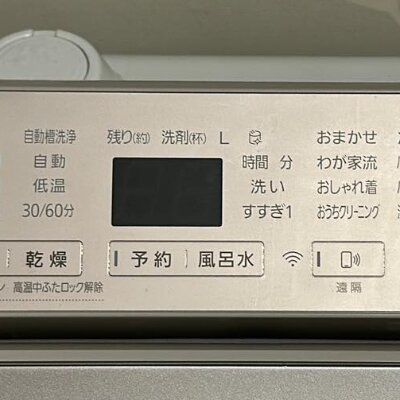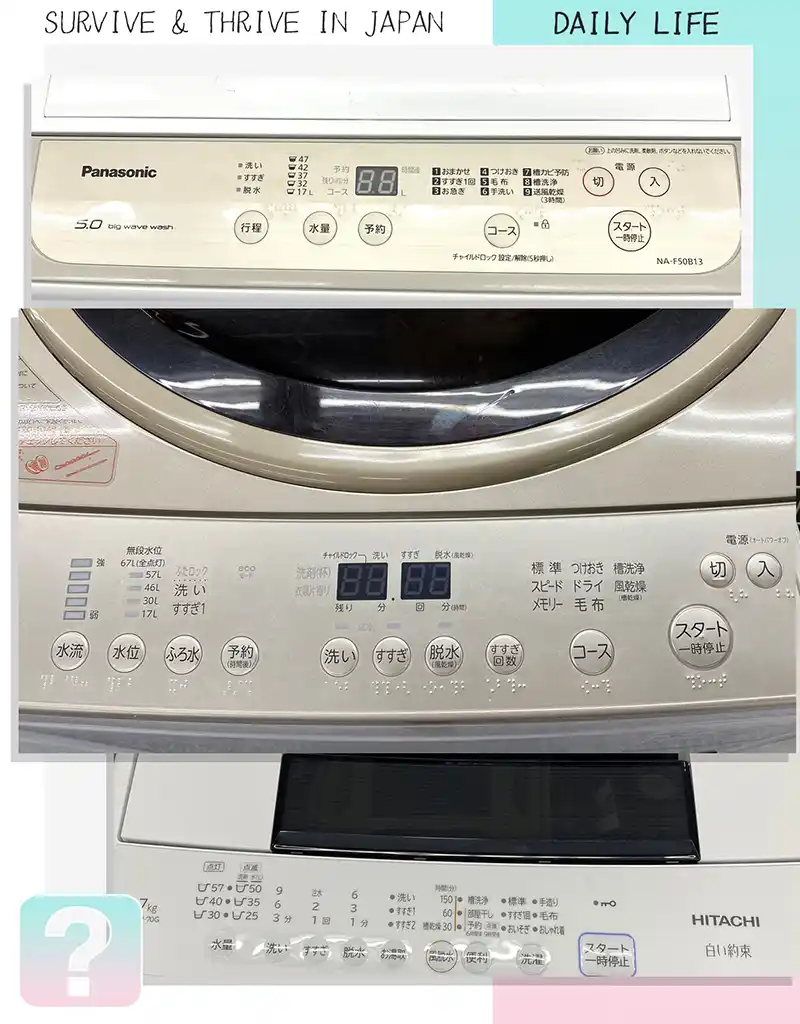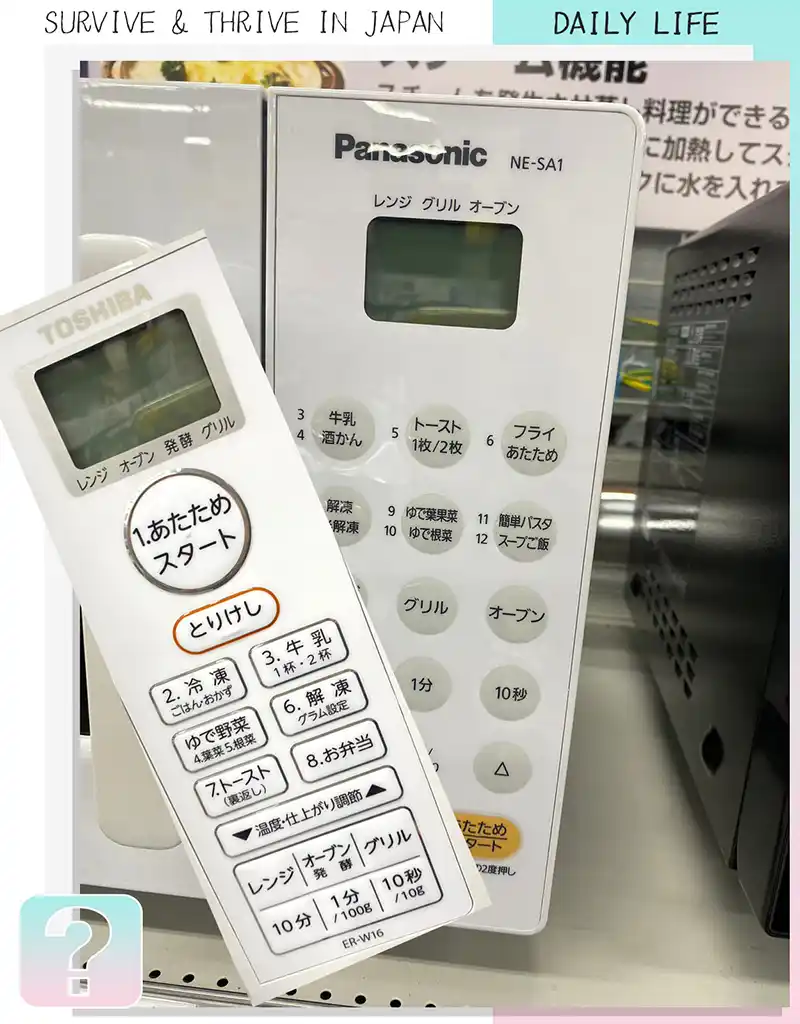Japanese Lifestyle Basics
It’s all Kanji to me!
How to use your washing machine, microwave, and the ramen ticket machine without crying.
As a student in Japan, you’re going to be learning to read. And while you may not remember how hard it was learning to read a new language the first time around, as someone now widely considered an adult, this time around you’re going to feel the burn.
Back in the olden days (The 90s and early 2000s), memorizing the buttons on a machine or writing out a template in English was the only feasible option for using the rice cooker, ATM, automated toilet, or washing machine without dire consequences.
Today, Google Lens (which includes OCR or “optical character recognition” meaning it can read text from photos) and a DOWNLOADED Japanese to English Google dictionary (so you don’t need any internet or cellular connection to use it) will read machine panels, cosmetics and food labels, and just about anything else you need turned into a language more familiar to you.
First, get your Lens on:

Google Lens:
- Android: Pre-installed on most devices.
- iPhone: Download from the App Store.
Japanese-English Dictionary (Offline):
- Android:Download Google Translate app, open Settings > Offline translation > Download languages > Japanese.
- iPhone:Download Google Translate app, open Settings > Offline translation > Manage downloaded languages > Download Japanese.
How to Use Google Lens for Offline Translations:
- Open Google Lens: On Android, long-press the Home button or swipe diagonally up from the bottom corner (may differ based on model). On iPhone, open the Google Lens app.
- Point & Capture:Focus your camera on the Kanji text you want to translate and either take a photo or do it live.
- Tap the Text Overlay:Google Lens will automatically recognize the text and display an English translation above it.
- Optional:For deeper understanding, tap the translated text. This will open the Google Translate app with the Japanese text and additional options like dictionary definitions and sentence context.
See Google lens in action:
How to use Japanese appliances
Japanese appliances are living in the year 3000
For those of you who want to understand how complex navigating Japan without being able to read can be, we present the average home washing machine, and microwave.
Braille? Possibly.
English? Nope.
While you’re best off using your Google Lens or other offline OCR app,
Let’s get familiar with a few concepts about doing laundry in Japan.
- Smaller Loads:The volume of home washing machines can be half or less than American standard appliances. Wash frequently, don’t let laundry pile up because you’re not going to be doing 2 weeks in one load.
- Hang (You) Out to Dry:No dryers: Japanese apartments, even if they have a washing machine, will almost never have separate dryers. Either the machine is a dual washer / dryer in the same unit, or you’ll be hanging it up to dry. Laundry is dried hanging up inside your apartment on any one of the tens if not hundreds of clever clothes racks sold everywhere.
| Japanese | English |
|---|---|
| 洗い | Washing |
| すすぎ | Rinsing |
| 脱水 | Spin drying |
| 風乾燥 | Air drying |
| 水量 | Water level |
| 予約 | Timer |
| ふろ水 | Bath water (wash with bath water) |
| 槽クリーン | Tub cleaning |
| コース | Cycle |
| 洗い技 | Washing technique |
| 切 入 | Power on |
| スタート | Start |
| 一時停止 | Pause |
| 洗剤投入口 | Detergent compartment |
| 柔軟剤 | Fabric softener |
| 粉末 | Powder |
| 液体 | Liquid |
| 洗剤・漂白剤 | Detergent / bleach |
- ふろ水 is a feature that allows you to use bath water to wash your clothes. This can be a convenient option if you are conserving water or if you have hard water.
- 槽クリーン is a cycle that cleans the washing machine's interior. This is important to do regularly to prevent buildup of dirt, soap scum, and mold.
- コース refers to the different types of washing cycles that are available on a washing machine. Some common courses include "normal," "heavy duty," "delicate," and "quick."
- 洗剤投入口 is the compartment where you add detergent to the washing machine.
- 柔軟剤 is used to soften clothes and reduce static cling.
- 粉末 and 液体 refer to the two main types of detergent that are available. Powder detergent is generally less expensive than liquid detergent, but it can be more difficult to dissolve. Liquid detergent is easier to use, but it can be more expensive.
- 洗剤・漂白剤 is a compartment where you can add detergent and bleach to the washing machine at the same time.
Not your dorm’s microwave
Japanese kitchens are generally VERY small, a gas or electric burner, and no oven or counter space.
Let me introduce you to the miraculous Japanese Microwave / Toaster Oven / Convection Oven / Steamer.
This magical range / grill / oven can heat a bento or cup sake, or make your toast, bake a cake or grill some fish, all with a press of a button.
But it’s best to know which button to press.
“How hard can it be to use a microwave??” ask people who have never visited Japan.
Here are a few images of a basic type you’ll probably have at home:
| Japanese | English | Description |
|---|---|---|
| あたため | Heat | This is the most basic function of a microwave oven. It can be used to heat up food, beverages, and even frozen items. |
| スタート | Start | This button starts the cooking or heating process. |
| とりけし | Cancel | This button cancels the cooking or heating process. |
| 冷凍 | Frozen | This mode is used to defrost frozen food. |
| ごはん・おかず | Rice and side dishes | This mode is used to defrost frozen rice and side dishes. |
| 牛乳 | Milk | This mode is used to heat up milk. |
| 葉菜 | Leafy vegetables | This mode is used to cook or heat up leafy vegetables. |
| 根菜 | Root vegetables | This mode is used to cook or heat up root vegetables. |
| 解凍 | Defrost | This mode is used to defrost food by weight. |
| トースト(裏返し) | Toast (flip) | This mode is used to toast bread, with a flip halfway through. |
| お弁当 | Bento | This mode is used to heat up a bento box. |
| 温度・仕上がり調節 | Temperature and finish adjustment | This function allows you to adjust the temperature and cooking time for different types of food. |
| レンジ | Microwave | This mode is used to cook or heat up food using microwaves. |
| オーブン | Oven | This mode is used to bake or roast food. |
| 発酵 | Fermentation | This mode is used to ferment food, such as yogurt or bread dough. |
| グリル | Grill | This mode is used to grill food. |
| 10分 | 10 minutes | This button sets the cooking or heating time to 10 minutes. |
| 1分/100g | 1 minute per 100 grams | This button sets the cooking or heating time to 1 minute per 100 grams of food. |
| 10秒/10g | 10 seconds per 10 grams | This button sets the cooking or heating time to 10 seconds per 10 grams of food. |
Some have stem functions and more as well, even on affordable models. Know what you want to eat and get and use your magic microwave and start using it today!
Literal meal tickets.
Ramen (or curry) via buttons.
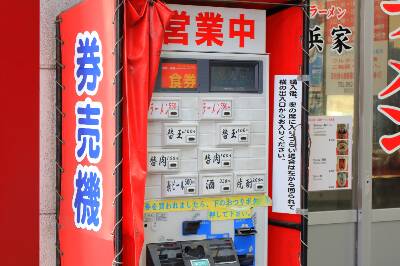
Food Ticket Machines in Japan
In Japan, some restaurants have food ticket machines at the entrance. Customers purchase food tickets before sitting down at a table. The machines vary from restaurant to restaurant, but they typically require customers to insert cash, select a product, and then receive a food ticket. If customers want to purchase more than one item, they can continue selecting products and then press the change button to receive their change.
It is important to note that some food ticket machines do not accept 10,000 yen bills or 500 yen coins. Some machines also accept credit cards or IC cards.
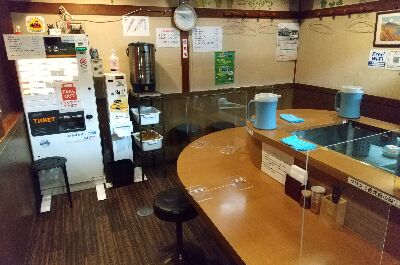
Restaurants in Japan that often use food ticket machines:
- Ramen restaurants
- Beef bowl restaurants (Gyudon)
- Set meal restaurants (Teishoku)
- Cafeterias
- Chain restaurants
How to use a food ticket machine:
- Insert cash into the machine.
- Select the product you want to purchase.
- The food ticket will come out of the machine.
- If you want to purchase more than one item, continue selecting products.
- Press the change button to receive your change.
- Give the food ticket to the waiter or waitress.
Tips for using a food ticket machine:
Check the machine before using it to see if it accepts 10,000 yen bills or 500 yen coins.
If you’re not sure how to use the machine, ask a staff member for help.
